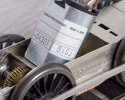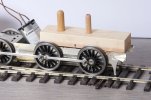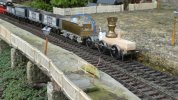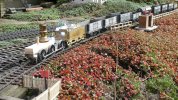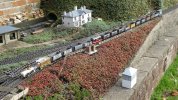Whilst S7 wheels will look nice in their own regard, I’m not sure what is to be gained by using them on 32 or 31.5 track.
Without doing the sums, I expect that using S7 wheels (set to 0F BTB) on 31.5 track would be much like using 0F wheels on 32mm track, a compromise that leads to adequate but not smooth running. And using S7 wheels on coarse scale track is likely to lead to derailments unless the loco chassis is particularly compliant, and speeds are obviously slow. And the dimension that “matters” is the check gauge, or BTF.
There are three standards, S7, 0F and 0C, which are not interoperable. 0MF, which I have used for my track, is a subset of 0F, using 0F wheel standards, which seems to me to give the best compromise of running, and interoperability. It is possible to build universal points which will accept 0C and 0F, and they were popular in garden railways some years back, but i helped convert one large railway to Peco because they were more trouble than they were worth for the one or two visiting locos with coarse standard wheels.
My approach and recommendation is to build your locos & stock to 0F standards, and your track to 0MF.
Lots more more info on the Templot forum.
hth
Simon


 . . . I suspect I could get away with a shallower flange on an 0-F wheel (which would look better on a loco like the the MW class F), but a narrower tread is going to drop into an 0-MF crossing vee just like an 0-F wheel drops into an 0-F one.
. . . I suspect I could get away with a shallower flange on an 0-F wheel (which would look better on a loco like the the MW class F), but a narrower tread is going to drop into an 0-MF crossing vee just like an 0-F wheel drops into an 0-F one.
